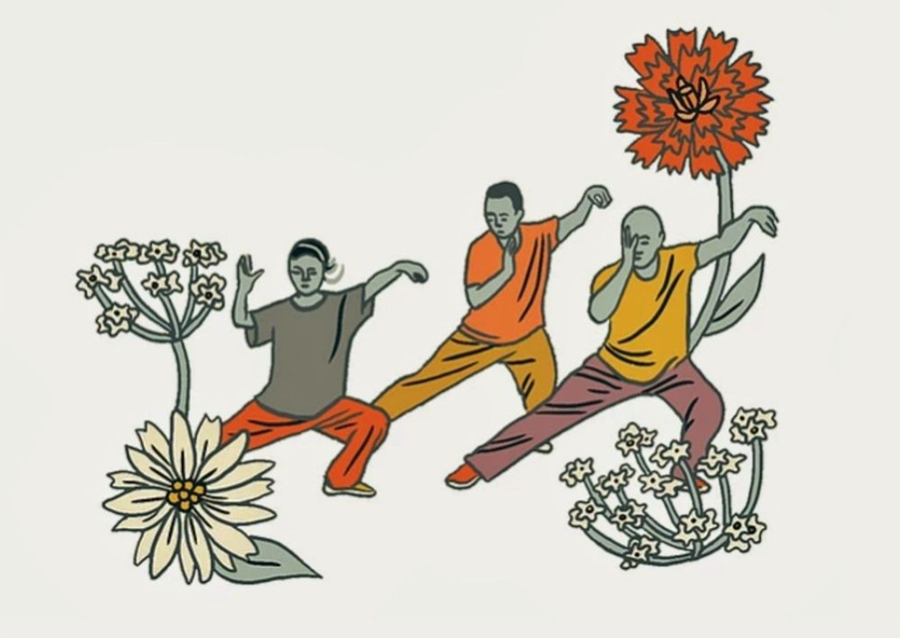
Most people have heard of Tai Chi – that’s what all the old folks do in the park, right? – but far fewer know what Qigong is. This article should explain that, answer the most frequently asked questions about it, and most of all, show you why you should be doing it.
What is Qigong?
Qigong is an ancient system of exercises rooted in ancient Chinese philosophy. They are designed to cultivate and influence “Qi” in order to improve the health and harmony of the mind and body. This is done by coordinating the breath with gentle movements and visualisation while standing and moving through set sequences. There are literally thousands of different examples and styles.
Qigong is one of the four pillars of Traditional Chinese Medicine (along with Acupuncture; Diet [inc. Herbs]; and Tui Na – a traditional style of massage). There is no disorder which cannot be eased or even remedied by facilitating the movement of Qi. That is what we are doing when we practice Qigong.
What is Qi?
Qi is the life force that animates the body. According to Traditional Chinese Medicine nothing is more important to health than the uninhibited flow of Qi through the body. The free flow of an abundance of Qi leads to the efficient function of all our vital bodily systems. It also leads to relaxation, happiness, and increased self-awareness.
A modern metaphor is to think of the body as an electric circuit through which current must flow. Qi is the electricity. It can be depleted or mis-directed through the circuit when aspects of the body or mind are in disharmony. This is essentially what disease is. Qigong replenishes the batteries and clears blockages within the circuit to reestablish a balanced flow.

Where and when did Qigong originate?
Qigong has developed in China over millennia. Exercise routines have probably continued to develop from shamanic practices since pre-civilisation, and the attributes of what we now call Qigong are praised in The Inner Canon of the Yellow Emperor – the fundamental text of ancient Chinese Medicine. The Mawangdui Silk Texts (168 BCE) shows a series of exercises that bears physical resemblance to some modern Qigong. The term”Qigong” itself, however, was not used until the twentieth century.
What is the difference between Qigong & Tai Chi?
Qigong is the practice of manipulating Qi flow in the body, primarily to improve health and correct disorder. Tai Chi can be thought of as a specialised type of Qigong. It employs the manipulation of Qi to improve the efficiency of body movement especially as applied to fighting techniques. Tai Chi is essentially a martial art although it is often practiced as a holistic form of exercise and meditation.
There are three main reasons for practicing Qigong: Medical; Spiritual; and Martial. Tai Chi is the best known form of the latter. Not all Qigong practitioners practice Tai Chi, but all serious Tai Chi practitioners practice Qigong.
What are the benefits of Qigong?
The benefits are many. The first benefit most people notice is that it leads to relaxation and calmness. This in itself means that it helps to relieve depression, anxiety, and other mood disturbances. Relaxation also enables the joints to open which allows the free flow of Qi. Gentle movement in a slow relaxed manner improves joint mobility and enhances muscle tone which improves balance and coordination. This produces a decrease in falls in the elderly and a corresponding increase in confidence. It has a positive effect on the cardio-vascular system, including lowering blood pressure. Many chronic conditions, including chronic fatigue syndrome, are improved with regular practice, and it boosts the immune system and increases vitality. Studies have shown that regular practice of Qigong has a positive effect on bone health in post menopausal women. A Comprehensive Review of Health Benefits of Qigong and Tai Chi can be found here.
Who is Qigong for?
Qigong is very accessible. It is non-competitive, low-impact, slow-moving, and unforced. The muscles are relaxed rather than tensed. The joints are not fully extended or bent, except in a controlled way, and connective tissues are not stretched. This means little strain is put on the body. This contrasts with other forms of exercise such as jogging which while very beneficial aerobically can put massive strain on the joints. These practices are designed to enhance health and promote longevity and well-being. They are adaptable for any age or physical condition. Everybody from a fit young athlete to an octogenarian in a wheelchair will benefit.
Your Qigong instructor
Project Dao’s John Walsh spent most of his working life as an osteopath, learning a lot about what can go wrong with the body, especially structurally. Deciding he wanted to empower people to take better care of themselves rather than having to rely on going to someone else to be treated, he trained as a Personal Trainer & Gym Instructor. Finding himself stuck in a bit of a rut at the age of 58, he decided to follow a life-long dream and go to China to study Tai Chi. There he was introduced to Qigong, gaining a Teacher’s Certificate in Chen style Tai Chi and Qigong after three years full time study.
John is now working at Project DAO empowering his clients to take control of their health through movement therapy, Qigong, and Tai Chi. He regularly holds Tai Chi and Qigong classes at Redfern Park as well as various institutions around Sydney. John especially likes working with people who are having difficulty taking the first step on their fitness journey because of health issues, and showing them the potential for change within themselves.
